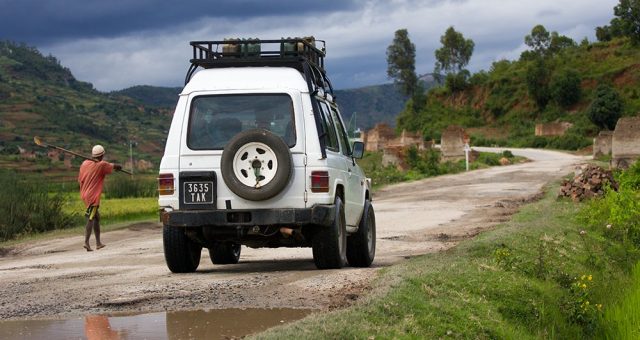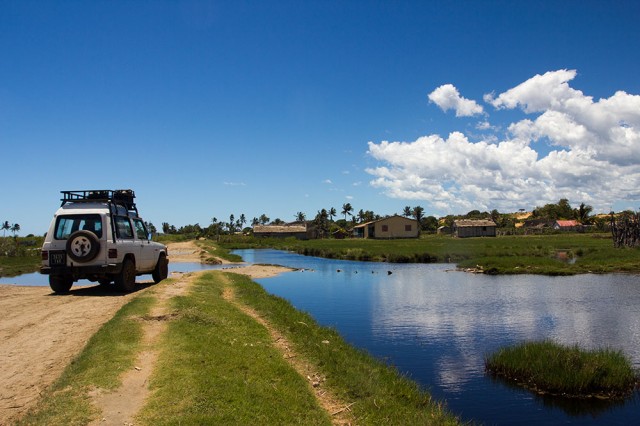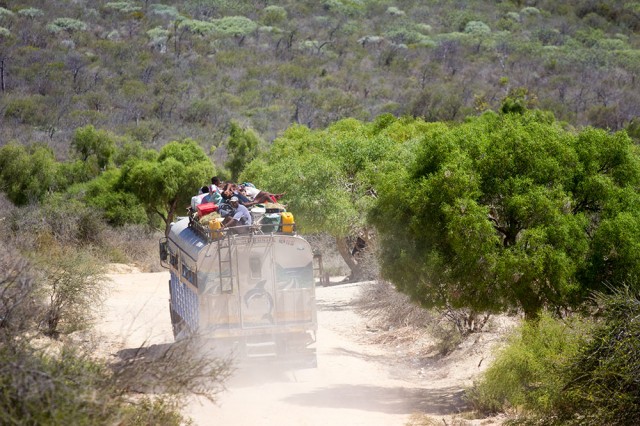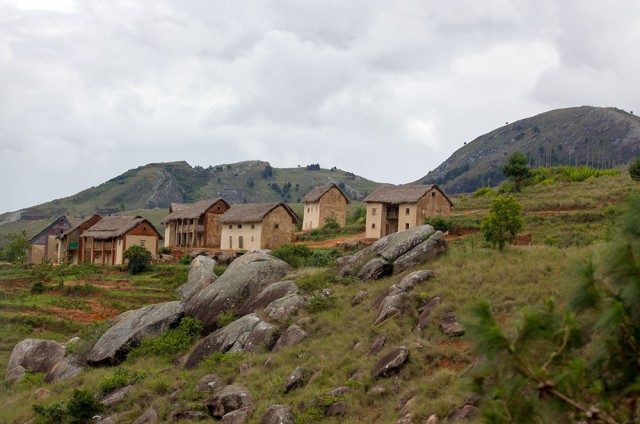Coen was waiting for us at the airport. My plan was to jump in the car, drive right away 3-4 hours to the nearest National Park, and see lemurs. I did not want to waste the entirety of the following day just to drive such a short stretch of road. It was getting late and Coen was against this idea. He said that after dark, drunken soldiers replace police checkpoints and meeting them on the way is not a pleasant experience. He insisted and we agreed to go to his place to spend a night. “This is a very corrupt country.” Said Coen “Soldiers on the road will always expect bribes.”
Madagascar, one of the little visited places by overlanders, is an exotic island very difficult to visit in your own vehicle. For that reason I wondered, why not fly there, rent a 4×4, and be independent? It all sounded like a big adventure. However, it is difficult to bring typical equipment needed for such journeys, and we could not expect that it would be provided to us along with a rental car. We reduced the list of things to bring to an absolute minimum and we decided that we would stay in hotels during this trip. The most difficult part of our preparations was finding a rental car. All the companies offer vehicles packaged with driver that stay with the car the entire journey. Many travelers may like that option. For those who desire to travel independently, it is a real problem. Self-drive rentals are almost non-existing in Madagascar. I was lucky to find Coen, a Dutchman who rents old Japanese 4×4 cars and has a small hotel.
The following morning Coen explained the nuances of our rental vehicle. We got a map from him and quickly hit the road going south. Our car was 1989 Mitsubishi Pajero 4WD with a diesel engine. The vehicle was 26 years old, but when we looked around, we realized that it was not so old when compared to many other cars we passed. The very loud diesel motor earned him the nickname “Tractor.” Our new team member was very dusty inside. Fortunately, the front seats were comfortable enough to spend many hours on the road.
Tractor had many surprises that it revealed to us on the way. At the very first gas station, while refueling we noticed a waterfall pouring down underneath. It turned out that the fuel tank was full of holes, and leaked badly when filled above a certain level. It was difficult to rely on the fuel gauge; it displayed full tank all the time. The speedometer was not working either. Leaking brakes required refilling the fluid every other day at minimum. When I forgot to do so, the brakes ceased to function. Air conditioning was not present in the Pajero and the ordinary fan in the cabin unfortunately gave no signs of life. Under the African sun, you can imagine us sweating inside the cabin and with the windows closed, there was absolutely no air movement at all. Opening them was the only solution to lower temperature inside. However, it did not give the desired effect as we drove slowly. This was common on the numerous ill-kept roads. The negative aspect of the open windows was an instant tan. To protect ourselves from sunburn we kept a small slit in the door at the top that allowed for a slight breeze. Unfortunately, even in this configuration, rays of the sun at its zenith almost immediately burned skin on my left arm and leg. Finally, our strategy was opening and closing windows depending on the position of the sun. What a game to simple gain that needed breeze in near desert conditions.
During rain, the heat from the sun was no longer a problem, but windows fogged quickly creating another challenge. As already mentioned, the cabin fan did not work and windows had to be closed when it rained. This combination instantly caused water condensation on all the windows inside and made occupied my wife while she wiped the windows to allow any visibility at all. Heavy downpour was another challenge for us because Pajero’s wipers worked only at one slow speed. I learned to see through water drops on the windshield. This skill allowed me to drive forward, but slowly. If we combine all these problems together when driving Tractor in the rain at night: the moisture inside the cabin, the fogged-up windows, the slow wipers and very weak headlights, you can imagine how hard it is for a driver to see and drive around potholes, but simply even judge where the road really is.
The next two weeks were a challenge not only for the old man Tractor, but also for the travelers, which it carried. Roads in very poor conditions, mud, rain, and dust, and the heat were a test for all of us.









